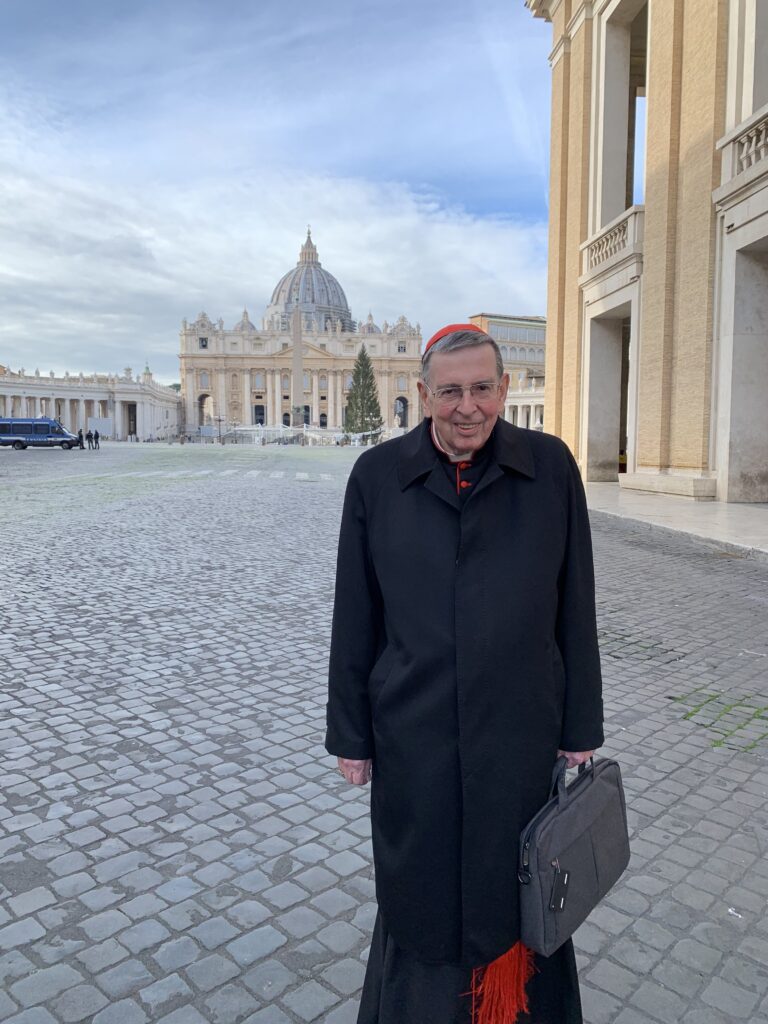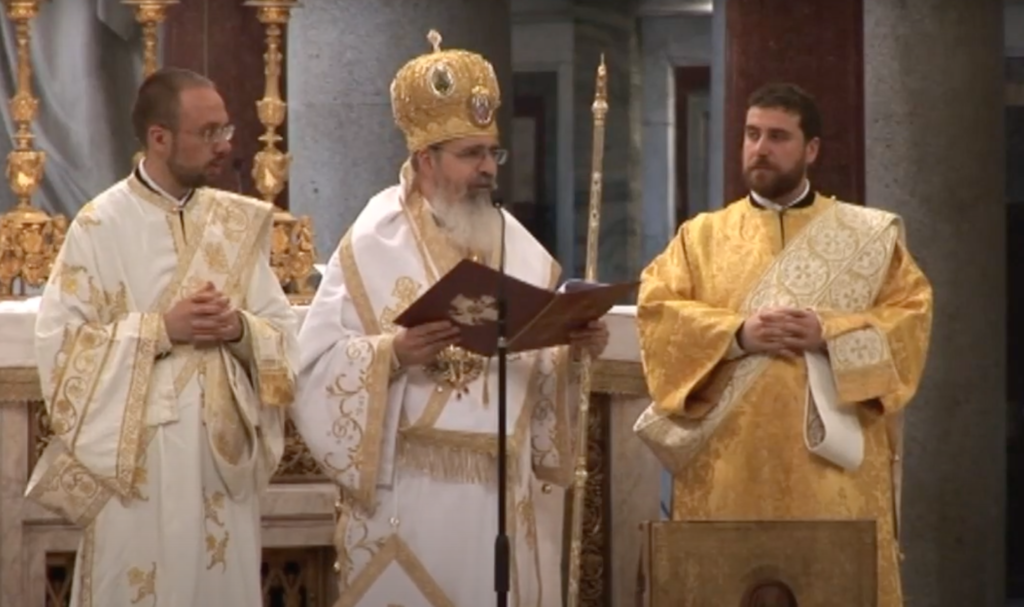"The Bishop and Christian Unity: An Ecumenical Vademecum". With this title and giving it in the presentation in the Vatican press room a very notable importance, it was published on Friday, December 4 this document, endorsed with the approval of the Holy Father and supported, in the presentation to the media, by the presence of four cardinal prefects of two dicasteries of the Roman Curia: of the Pontifical Council for Promoting Christian Unity, and of the Congregations for the Oriental Churches, for Bishops and for the Evangelization of Peoples.
It is an important document that goes through - practically re-reading and updating - the great magisterial documents of the past 60 years, from Unitatis Redintegratio from the Second Vatican Council, passing through the Directory for the application and principles of ecumenism of 1993 and the encyclical Ut unum sint from St. John Paul II, to the pontifical interventions of Popes Benedict XVI and Francis.
The bishop, protector of unity
Further elaborating on what has been said in the preceding documents, the Vademecum (Vad) focuses in a special way on the role of the bishop.The Church, of every bishop of the Catholic Church, in ecumenical dialogue with the other Churches and Christian communities. The bishop is the bond of communion within each Christian Church, and above all of the Church of which he is pastor, and towards all those who are baptized in Christ: "...".The ministry entrusted to the bishop involves a service to unity. To the unity of his own diocese and to the unity between his local Church and the universal Church. It is a ministry with a special meaning: the search for the unity of all Christ's disciples.." (Preface). This will be, we could say, the guiding thread of the whole document: the bishop is the one who creates and guards, who protects the unity in his Church: "The bishop, as shepherd of the flock, has the precise responsibility to bring all together in unity. He is the "principle and visible foundation of unity" in his particular Church." (n. 4). Let us keep in mind that the ecclesiological dimension of the episcopal ministry is taken up by the Vad mainly from the Lumen Gentium of Vatican II. In the very introduction to the document and almost as a sure foundation on which it will rest throughout its pages, the Vad clearly indicates the bishop as the source of unity in his Church by that which he teaches, and by that - the Mystery - which he celebrates, and in all that he does and lives as shepherd of his flock: "...its teaching of the faith, its sacramental ministry, and the decisions of its pastoral governance." (n. 4).
The document is divided into two parts: a first part devoted to the promotion, formation and dissemination of the ecumenical journey in the Catholic Church -giving special emphasis to the structures of ecumenical dialogue in each particular Church and to the formation of the laity, seminarians and clergy in the ecumenical dimension, and a second part in which the relations of the Catholic Church with other Christians are presented, and emphasizing the spiritual dimension on which ecumenism must be based. Specifically in three fundamental aspects of ecumenical dialogueThe dialogue of charity, the dialogue of truth and the dialogue of life. I do not intend to summarize the whole document in these lines. I would simply like to highlight a few points that seem fundamental to me.

Communion and dialogue
In the first placeThe Vad emphasizes on several occasions how the bishop is the man of communion and dialogue with and among the faithfuland with and among the faithful and brethren of other Christian confessions: "..."....bishop as a man of dialogue, who engages people of good will in a common search for the truth through a conversation marked by clarity and humility, and in a context of charity and friendship" (n. 7). The bishop is also a teacher on the ecumenical journey, teaching always: "....with love for the truth, with charity and with humility..." (n. 11). These are fundamental attitudes and dispositions both on the part of the bishop and on the part of those who are delegated to the formation of clergy and laity in the dioceses. This formation in the ecumenical journey foresees that it should always be done without compromise, in which unity is built to the detriment of truth. This is a fundamental aspect of the dialogue with the other Churches. and Christian communities, which has been underlined in a special way by the pontifical magisterium in recent decades. Love of charityThis means avoiding polemical presentations of Christian history and theology that could lead to confrontation rather than dialogue. Finally, love and humble attitudewhich allows us to see what "what God accomplishes in those who belong to other Churches and Ecclesial Communities"affirmed by St. John Paul II in Ut unum sint.
The common prayer
Secondly, The Vad underlines in a very clear way the three fundamental aspects of ecumenism: dialogue of charity, dialogue of truth and dialogue of life, as the Popes of the last decades of the Catholic Church have shown in their doctrine and gestures. An ecumenism based on dialogue and prayer for Christian unityand above all founded on the profound conversion of heart and holiness of life of Christians. Prayer for Christian unity, a common prayer based on biblical and liturgical texts common and fundamental to all Christian Churches.I note how the Vad is also well aware of the difficulties that arise because ".... the Lord's Prayer, the Psalms, the liturgical feasts, the saints and martyrs in common, the monastic and consecrated religious life itself ....some Christian communities do not practice joint prayer with other Christians" (n.17). Ecumenism as a path founded on hope and also on suffering and the cross. A dialogue of charity that will always lead us to discover the other as a brother in Christ (n. 25). A dialogue of truth, in the second place, which has as its basis theological dialogue in order to be able to recompose unity in faith. Finally, the dialogue of life, inasmuch as: "The truths jointly formulated in theological dialogue call for concrete expression through joint action in the pastoral field, in service to the world and through culture... ...Catholics are asked to practice in equal measure two twin virtues of ecumenism, patience and perseverance....." (n.31).
Intermarriage, an ecumenical venue
In third placeThe Vad covers two issues or problems that have not yet been fully resolved or equally accepted by all Christian Churches: the issue of mixed marriages and the issue of the communicatio in sacris, communion with the Holy Mysteries, the sacraments, the sacraments. With regard to mixed marriages, the Vad insists on the authority of the diocesan bishop with regard to the permissions to be given by the bishop.and presents the subject under two interesting aspects: intermarriage as a place of ecumenism, of encounter between two Christian traditions and at the same time as a place of suffering that is experienced within a blended family.: "Mixed marriages should not be considered as problems, since they are often a privileged place where Christian unity is built... However, pastors cannot remain indifferent to the pain of the division of Christians, which is experienced perhaps more acutely than in any other context. The pastoral care of interdenominational families, from the initial preparation of the couple for marriage to their pastoral accompaniment once they have children...." (n.35). With regard to the communicatio in sacrisThe Vad underlines how on the one hand the celebration of the sacraments expresses full communion within a Church, and how each sacrament constitutes full participation in the means of grace, and on the other hand clearly expresses how the celebration and administration of the sacraments among the various Christian Churches which are not in full communion remains an area of serious tension (n. 36).

The document reaffirms what had already been specified in previous documents, namely, that the administration of the sacraments, especially the Eucharist, penance and the anointing of the sick, should be reserved for participation in the full communion of a Church. It will be the bishopand here we find the common thread of the whole document, the one who must discern the opportunity to administer a sacrament to a member of another Christian confessionThe administration of a sacrament should never be a simple courtesy or kindness, but is always a means for the sacrament's administration. administering a means of salvation and God's grace. In number 37, the Vad touches on another important and at the same time delicate subject, namely the change of ecclesial affiliation, especially on the part of members of the clergy. It insists on the one hand to welcome Christians of other Christian denominations who join the Catholic Church with joy. and at the same time avoiding any form of triumphalism, and on the other hand informing in a clear and precise way what it means to leave the Catholic Church.
Practical and cultural ecumenism
Finally, the Vad presents two forms of ecumenism that are new and certainly positive in our present time: the practical ecumenismThe second is what the document calls the "assistance and help in dramatic moments of history between different Christian Churches"; and the third is what the document calls the "assistance and help in dramatic moments of history between different Christian Churches". cultural ecumenismi.e.: "all the efforts of Christians to better understand their respective cultures, aware that, beyond cultural differences, they share in varying degrees the same faith expressed in different ways." (n.41).
Each of the Vad sections carries a series of recommendations and practical advice for reflection and ecumenical preparation at the diocesan level. Interesting and useful is the appendix of the Vad, which lists the various Churches and Christian confessions involved in ecumenical dialogue with the Catholic Church. A useful and positive document, the Vad makes a rereading of the texts of the magisterium of the preceding decades, emphasizing the value and necessity of ecumenism in itself and within each Church, and also underlining the role of the bishop as the link and guarantor of ecclesial communion in his own Church, and towards the other Churches and Christian confessions.
+P. Manuel Nin. Titular Bishop of Carcabia, Apostolic Exarch.
Former apostolic exarch of the Catholic Church in Greece








